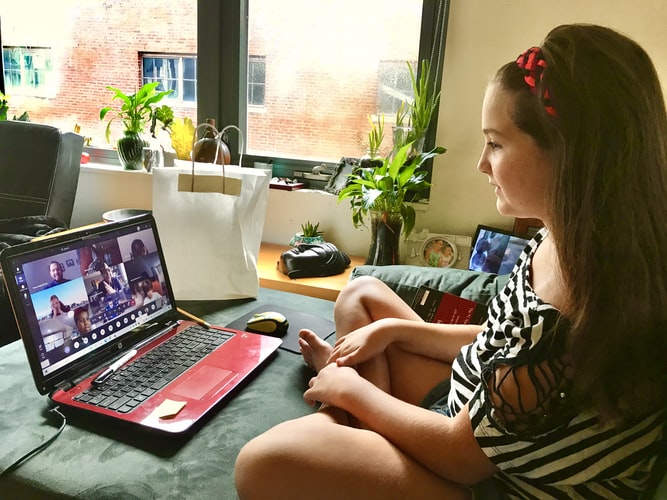
Creating A Better Online Learning Experience
In today’s world driven by an ever-increasing rate of globalization, the education system has been transformed from local to global. The value of borderless education and OSSD, in which students are exposed to individualized programs, self-actualizing processes, and multiple sources of learning continues to grow. The role of the teacher has quickly evolved from a direct controller into that of a partner, a coach, or a counselor. OSC believes crafting better online learning experiences is more important than ever. These experiences must be engaging, effective, and energizing. Such experiences help us keep pace with change and orient us towards a culture of continuous learning and curiosity. The failure of creating better learning experiences will cause the culture to suffer and the organization will stagnate, lag competitors and fade away. In pursuit of delivering optimal education to students, we should explore ways to design, develop, and deliver better online learning experiences.
Learning needs to be personalized
There’s no one-size-fits-all approach to learning, especially for OSSD, which doesn’t focus on standardized tests. Every student is different, from the way they learn to their strengths and weaknesses. Thus, learning needs to be personalized, customized, and tailored to best meet the needs of learners as individuals. Teachers should create individual learning plans so that they can adapt their teaching and expectations to the abilities of the students.
As a teacher, you must be observant of the learning capabilities of the student. It is important to assign recommended courses and course materials to address gaps in their education and foundational knowledge.

Help students maintain focus
A major contributor to student failure in online classes is the inability to focus, which exists on multiple dimensions. Lacking the structure of a traditional school day, many students find it difficult to concentrate, prioritize, organize their time, and stay on track. Thus, it’s essential to provide them with the structure that they need.
For each week, list the tasks that students must complete. Make sure the directions are easy to follow. Prompt students repeatedly to remind them of activities, assignments, assessments, and due dates.
Teachers should be available before and after synchronous class sessions. Students are far more likely to reach out to them if they are easy to reach. Stay online after a live session ends, and solicit questions, comments, and other forms of feedback.
Make discussions meaningful
Whether a discussion takes place orally, within a breakout session, or by text, either through chat or a discussion forum, make sure that the discussion genuinely contributes to students’ learning.
- Brainstorming sessions: students present a variety of ways of approaching a topic or a problem
- Comprehension exercises: students help one another understand a complex topic
- Critiques: students challenge a particular argument or interpretation
- Diagnoses: students deconstruct a problem
- Sharing activities: students reveal their own experiences or perceptions

Increase student engagement
During individual sessions, the tutor needs to check on student comprehension, conduct polls, and pose questions. Give students opportunities to actively participate during the class session.
Provide active learning opportunities: have students research the answer to a question; have them analyze a case study; ask them to analyze a text, a document, a video clip, or some other form of evidence.
Project-based learning: students may contribute to a class blog, create a podcast, a video story, or a poster or infographic, produce a policy brief, research and respond to a controversy, or conduct a study of something in their immediate neighbourhood.
Work with a tutor
Teachers should work with the tutor in advance and have clarity on where and when they need assistance. Expect to need assistance with: monitoring chat during synchronous interactions; setting up and supporting break-out rooms; helping students debug technology; setting up polls, opening them up and making sure that results are captured/shared; capturing notes and feedback; and updating the class board.
Be mindful of culture and time zones
Recognize the time zones you are dealing with and be prepared to adjust. Culture may also lead to different student expectations/behaviours. Do the students feel comfortable asking questions? If not, consider how you can confirm progress or engage in discussion and interaction.

Provide timely response to all student postings and assignments
Responding promptly to students’ questions will keep them from procrastinating on assignments, waiting for clarification in response to their queries. Providing thorough and immediate feedback on all assignments allow students to quickly digest their learning and move on to future assignments on time.
Be clear in all “housekeeping” aspects
Grading criteria, all contact information, policy on late submissions, and other such items need to be clearly defined so there is a minimum of confusion later on in the class. Posting these items early in the class cuts down on student confusion and student emails asking about them – a big time-saver for both student and the teacher.
Give positive assignment feedback that helps the student improve
Students must have feedback on assignments that lets them know how they are doing in the class, what they need to do to improve, and what they are doing right. A student should be given individual item feedback that is made up of three parts: what is wrong, why it is wrong, and how it can be made right; along with positive feedback for individual points that are outstanding, and an overall positive comment at the end of the assignment.
Provide on-demand access
A strength of online learning, as opposed to traditional classrooms, is the increased availability of the educator. Traditional classrooms allow for teachers to teach at a standard pace. On-demand access to teachers allows students to quickly overcome minor bottlenecks in their learning, as opposed to traditionally where learning would have stagnated until the next teaching session.
Break content down into manageable pieces
A long lesson can feel overwhelming for a learner. Rather than having one single lecture explaining a concept, that content needs to be broken down into a series of short segments. This applies to all types of content and is especially important for video and audio.
Content that’s broken down into segments gives learners the option to finish everything in one sitting or do it piece by piece over a few sessions. It also allows learners to go back and review a specific piece of content without having to sort through a long video or pages of text.
When content is delivered in manageable pieces (e.g., classes of 30 minutes), learners are more likely to watch an entire video or go through the entire lesson.
Use gamification to keep learners engaged
Gamification is the process of adding features commonly found in games such as earning points and badges, progress tracking, and receiving rewards. Not only do these additions make learning feel more fun, but they also help learners stay motivated.
A progress bar helps students visualize their progress, which in turn helps them feel a sense of accomplishment. Pop-ups with words of encouragement can be used to ensure learners don’t feel defeated if they are repeatedly struggling with a concept. A quick celebratory pop-up at the end of a unit reinforces their progress and provides a nice boost that motivates them to keep going further.
Let parents know how they can get involved
As teachers develop their online learning lesson plans, think of ways the parents can assist if they wish to. For example, teachers can provide supplementary resources, videos, or activities related to your lessons that parents can do with their children.
Motivate your students
Motivation is key to effective learning, and the most important contributor to motivation is the course’s perceived relevance in the student’s eyes. It is important to discuss the course’s utility and value. Help your students understand how this course provides a foundation for more advanced ones.

Create a sense of community
Help students get to know one another. Split a larger class into smaller breakout groups and have them participate in icebreaker activities. Breakout sessions can be a good opportunity for students to share opinions, knowledge, and experiences.
An online learning community brings social learning into the mix. Students get a place where they can discuss course concepts and answer each other’s questions, as well as collaborate on assignments.
Identify and support struggling students
During the current pandemic, students are struggling in many ways. Some require academic help or technological assistance, whereas others may need non-academic support. The need for mental health support has only grown since classes have been digitized. As a teacher, you can monitor your students’ engagement and undertake regular check-ins. You can also reach out proactively when there are signs that a student is falling behind.
Get student feedback and respond to it
It may seem obvious, but it’s important to realize that your online teaching presence isn’t fully formed. It is a work in progress. If you want to improve your presence, you should communicate to students that their opinions matter. You can ask your students various questions; Do you have any technical issues? Are my classes clear? Can you easily find what you want? Do you feel like your voice is heard? How can I improve the online classroom for you?
As an industry veteran, OSC has long sought to craft the optimal learning experience for our students as they work towards completing their OSSD through online learning. To us, student engagement directly translates to online learning success. The more engaging our course is, the more valuable it is to students, and the more successful our class will be. By creating meaning, changing up teaching formats, and connecting directly with our students, we would become better educators – and help our students become better learners.
